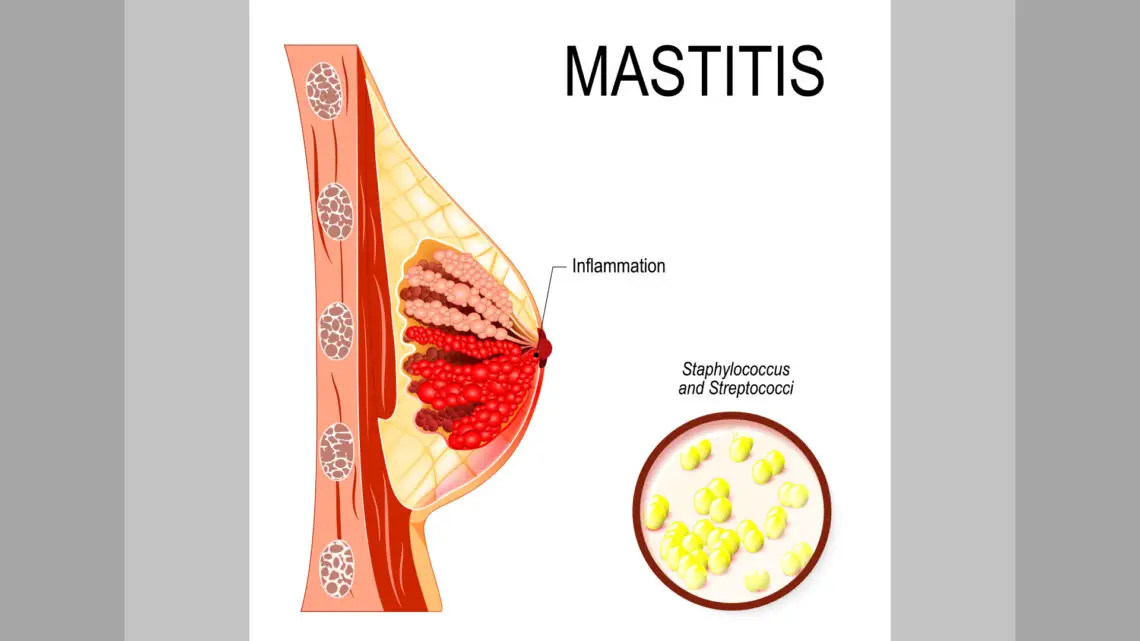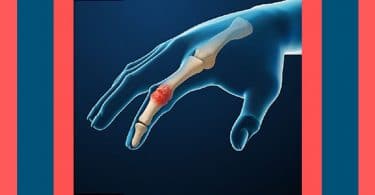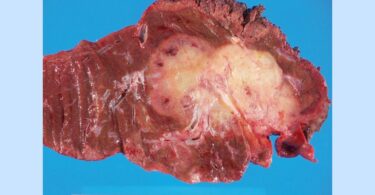This is an interesting acute case because it shows the power of homeopathic remedies even when a very detailed case can’t be taken due to a variety of factors, and there’s a limited availability of remedies. This case was resolved completely over multiple daily emails.
This is not the way I normally work, but the client was long-distance, was in a lot of pain and under a lot of stress as she was moving house, and I wanted to help her in whichever way worked best for her. Also, she had a limited choice of remedies on hand and we didn’t have the time to order and wait for new remedies to arrive. I had treated her constitutionally in the past, so I was familiar with her history.
Ms. A was 30 years old and nursing a 10-month-old baby, her third child when she came down with mastitis. “Mastitis most commonly affects women who are breast-feeding (lactation mastitis). It is an inflammation of breast tissue that sometimes involves an infection. The inflammation results in breast pain, swelling, warmth and redness,” according to the Mayo Clinic. The patient may also have fever and chills.
She had all the classic symptoms described above, as she outlined in her email to me: “I have mastitis. It came on suddenly a couple of days ago. I am in pain and have been running a fever up to 102. The pain and lump is on the side of my left breast. I have chills and want to stay covered up all the time. I feel worse when moving.”
By the time I saw her email and wrote back to her, she had become very worried about her condition and had gone to the ER. She sent me another email, “At the ER, I was put on IV antibiotics and they gave me Tylenol. Those things helped while I was there but when I came home in the evening, the fever came back.
Both breasts are engorged now and nothing is coming out. All the blood work was good. They did an ultrasound which showed no cysts or abscess. I am so upset because I think that my body will stop making milk now. The baby won’t eat anything else. He’s not interested in food or the bottle. I’m supposed to take antibiotics tomorrow and continue Tylenol. I don’t want to take more antibiotics so if you don’t think it’s too late to correct this, I would love to try.”
I sent her an email with several questions so that I could prescribe a remedy. This was her response the next morning:
“Before the ER, the left (breast) was hard and painful and started getting red spots. The original spot was on the left side and it was warm, tender and hard and started growing and turning red as the evening turned to night. The nipples were fine, but the sore spot on the side was aching.
The pain caused my whole body to ache like the flu. The right (breast) was starting to get a hard sore spot and the chills were out of control. Now the breasts are not painful but nothing comes out. The right was very engorged during the night.
Much more pain on the right side now. The whole breast is hot, engorged and painful to touch and nurse. The right breast is so heavy and sore. I can’t nurse on that side. Not radiating but very painful with any movement. The hard lumps are on the sides, by the armpit and between the breasts. Temp. is 99.6. The right breast is so heavy and sore.”
Based on the information, I considered Phytolacca and Bryonia which are both leading mastitis remedies, both of which she had with her. Nash says, “Phytolacca is also one of our best remedies for mastitis… The choice often lies between this remedy and Bryonia, and they complement each other.”
Since Bryonia is more right-sided, and her left breast was affected first, and then both breasts, I asked her to start with Phytolacca 200C. Kent says, “It seems that the remedy centers in the mammary glands…lumps form, pains, heat, swelling, tumefaction; even violent inflammation and suppuration. No other remedy in the Materia Medica centers so in the mammary gland.”
I also asked her to try some cabbage leaf therapy. This involves the application of cabbage leaves to the breasts to soothe inflammation and provide relief from pain to the nursing mother. The NIH says, “While the literature has indicated the effectiveness of cabbage in reducing pain and hardness of breast engorgement and lengthening breastfeeding duration…cabbage may also deter the onset of more severe symptoms such as fever and flu-like symptoms and prevent the transition from localized to systemic infection within 24 hours.”
A few hours after the first dose of Phytolacca, she emailed me, “I got the cabbage leaves and took the remedy, and the right breast cooled down and I was able to express one ounce at 3 pm. I’m so relieved and happy to get that ounce!
There is still a lump and the right is still much bigger than the left side but I’m having some relief right now. Please let me know what you recommend now.” Since she felt better with cabbage leaves and Phytolacca 200C, I asked her to take another dose that night and to get back to me the next morning.
The next morning, she said there was not much improvement overnight. I then asked her to switch to Bryonia 30C twice a day. Bryonia is complementary to Phytolacca; she had also described “hard lumps” and “worse when moving” as one of her original symptoms. Kent says, “When the entire gland is as heavy as a stone, and hard, and the patient is sensitive to motion and touch, Bryonia.” Bryonia is of course a right-sided remedy.
She saw quite a bit of improvement after Bryonia. Her next email said: “I made it through the day without Tylenol. No fever but the right breast is still bright red, hot and swollen on the top and side…feeling much better overall. I have low energy but feeling hopeful.
My appetite is good but less than normal. I haven’t had any chills today but I did sweat a lot at night. The left breast has no lumps. The right is one big lump wherever the redness is, extending close to the armpit but it’s half the size of yesterday.” This was excellent progress and I asked her to continue with Bryonia 30C twice a day.
Her email the next day: “I’m continuing to improve. I woke up with a headache, but there is another 50 percent improvement on the right breast. The lump is smaller and less tender. The redness is more pink now…” I asked her to continue with Bryonia 30 C.
Finally, she sent an email, “This morning I feel 95 percent back to normal. The right nipple still has a slight sting but I’m almost back to normal.” I asked her to take Bryonia 30C once that day and then to stop as I expected her to be fine after that. I didn’t hear from her again so I assumed she was doing well, and was busy with her move.
After two weeks, I heard from her again. She said, “I woke at 7 am today with another lump on the left side and it seems to be growing. The lump is red and closer to the nipple this time. I think this is coming on because of stress. I moved into the new place a week ago and the house is still under repair.”
Since the left breast was affected this time, and Bryonia is more of a right-sided remedy, I felt it was better to start with Phytolacca 30C, and use the cabbage leaves again. Her email after taking Phytolacca 30C: “I had two doses, rested, applied cabbage leaves, and did three feedings, but I’m feeling worse. I am getting chills and I think I’m getting a fever. Should I continue with Phytolacca?”
I asked her to switch to Phytolacca 200C. After two doses, she wrote, “I’m feeling well but the breast is still very sore. It is less sore than yesterday and it has moved up.” I asked her to take one more dose of Phytolacca 200C. The next day I got an email from her, “Good news! I feel 100 percent better today! Thank you!”
This was a happy outcome. Despite this painful acute having affected her during a period of great stress, she was able to recover, avoid antibiotics, and continue nursing her baby with the help of two homeopathic remedies.
Here are the indications for some of the other remedies for mastitis:
Belladonna: For the initial stages of mastitis. Kent says, “If there is high fever; congestion to the head; throbbing carotids; much redness, and the redness radiates from the nipple, Belladonna is the remedy.”
Croton tig: The keynote for this remedy in mastitis according to Kent is, “It feels to her as if a string were attached behind the nipple pulling backward, a sharp, drawing, stinging pain…Though it is but a little thing it is a very important symptom to know with Croton tig. We see this drawing, as with a string, in the eye and in the breast…”
Silicea: This is useful if there is abscess formation (as also Hepar Sulph). Kent says about Silicea, “Threatened abscesses of the breasts. If the remedy is given in time, it will abort the entire trouble. Where the remedy has come too late and suppuration is inevitable…there may be throbbing, tenderness, and weight, yet the remedy controls the pain, hastens the conclusion…”
References:
https://www.mayoclinic.org/diseases-conditions/mastitis/symptoms-causes/syc-20374829
https://www.webmd.com/diet/what-to-know-about-cabbage-leaves-for-mastitis
https://www.ncbi.nlm.nih.gov/pmc/articles/PMC9886531/
Lectures on Homeopathic Materia Medica by James Tyler Kent
Leaders In Homoeopathic Therapeutics by E. B. NASH M.D.






I really like your case and am wondering if this lady had recently had a return of her menses? Most women get them around 8 months after the birth not long after the baby starts to take solid foods. That heralds a shift in the endocrine system whereby the preponderance of strictly lactation hormones (prolactin and oxytocin) makes way for the return of surges of progesterone and oestrogen. Our repertory lists Phytolacca as THE main remedy for mastitis immediately post birth and that’s when there’s a similar hormonal shift from pregnancy to lactation hormones and so it’s the same when menses returns and Phytolacca is a great fit. It’s also good to use if a woman gets mastitis in her menopause (again due to a hormonal shift). Also…when mastitis goes from one breast to the other it’s a clinical sign that streptococcus is the culprit so giving strep 200C along with the remedy works at the deepest level and clears up the infection more quickly. Another therapeutic tip for when the breast is caked with milk is to soak the breast in warm water to which has been added a handful of Epsom Salts. The salts attract water into solution and breastmilk is 85% water and the breast is soon relieved.
Thank you Patricia, this is very helpful!